What Does an Experienced Whale Watcher Have in Their Go Bag?
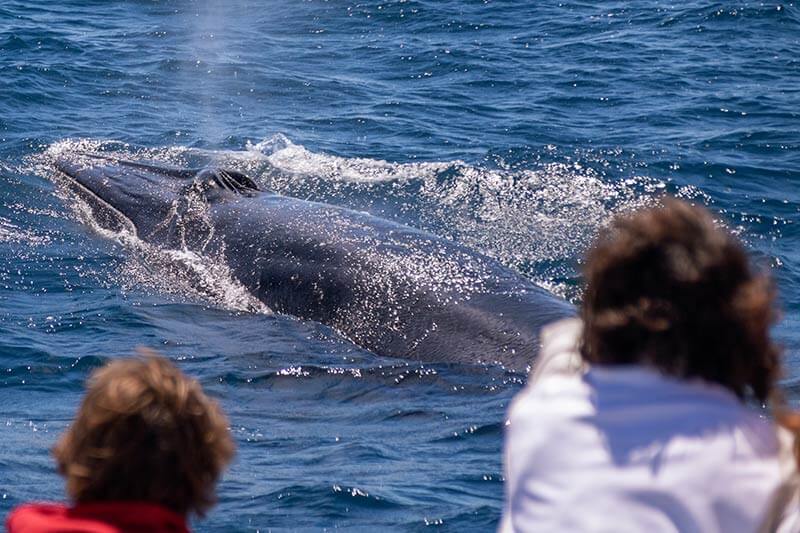
Did you just book a whale watching trip? And, are you already feeling excited about what you may see on your trip but aren’t sure what to bring on whale watching day? Experienced whale watchers anxiously await sighting their favorite animals and know rare sightings can happen at a moment’s notice. These feelings are one of the lures of whale watching. The thrill of not knowing what may appear at the water’s surface at the exact moment you are looking makes every whale watching trip so exciting.
To be prepared, every experienced whale watcher carries a few items with them in their bag to successfully capture the best glimpse of the ocean’s incredible giants. Since you are reading this, we know that, like us, you, too, have a passion for whales and dolphins. If you are ready to learn more about how to whale watch like a pro, then take a look at our list below of “must-have items” every professional and amateur whale watching enthusiast should have in their bag for a whale watching trip in California.
Field Guide
Having a field guide with descriptions of the possible animals you may see out to sea is essential when you are on a whale watching trip. Each species has varying characteristics that can look similar to one another so having a guide that helps you to differentiate the animals is critical when documenting what you are seeing. Field guides are also a great tool to share with friends and guests on your whale watching trip. In Southern California, we are lucky to have more species of whales and dolphins in one place than any other place on Earth. Having a field guide packed in your bag will help provide more insight and visual representation of the animals you are sighting during your whale watching trip.

Polarized Sunglasses
Most experienced whale watchers on a whale watching trip in California will tell you that the one thing that gets them through the day is their “sunnies.” Making sure you have polarized lenses not only cuts the sun’s glare, but the color of the lens can also play a role in your whale watching trip too. Blue-colored lenses are great to have on sunnier days and can extend your field of vision. On foggier days, yellow lenses help brighten the water, ensuring you don’t miss the opportunity to see that long-awaited “spout.” When the marine layer is thick, having the correct sunglasses gives experienced whale watchers the perfect tool to help their eyes work less hard to see more. You may even be able to spot their lighter color under the water! Risso’s dolphins shine a bright teal shade underwater, and having polarized glasses gives your eyes the added depth to see the glowing reflection of their lighter tones underwater. Check out our up-to-date blogs and sightings chart here to help you get an idea of what you can expect to see on your tour based on the seasonality of specific animals. But remember, any day is the perfect day to spot whales so you may find yourself spotting something new on the day you go out on your whale watching trip!
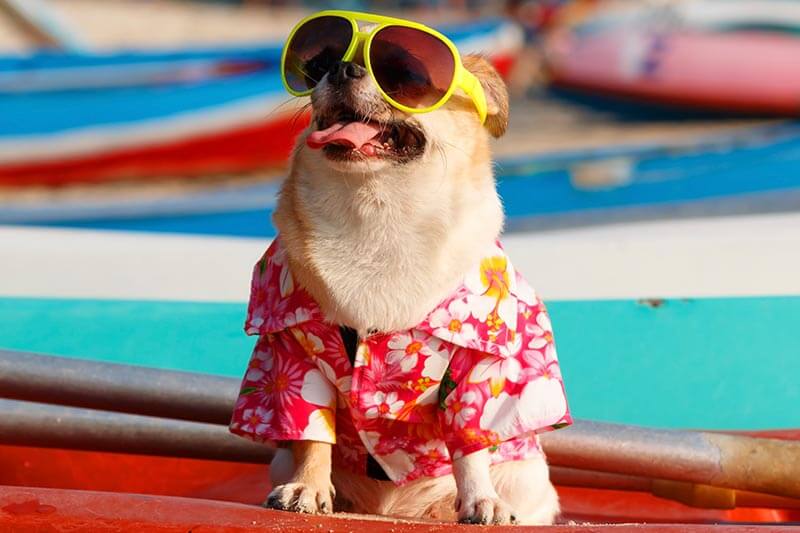
Binoculars
Seeing whales in their environment is certainly a sight to see. The open ocean is a vast place, and the extensive open ocean has a lot of water to cover. The next essential item to have in your bag on your whale watching trip is a nice pair of binoculars or “binos.”. With a high-powered magnifying lens, experienced whale watchers can see much farther away and potentially have the opportunity to log more sightings of multiple species on one trip. Dolphins travel in larger groups, and a higher-powered lens makes it easier to see from long distances. The weather on the California coast is favorable all year long so when you are on a whale watching trip in California, you should be able to see for miles when using your binoculars. Humpback and gray whales have distinct markings that are more easily identifiable when sighted when using binoculars. Shyer minke whales can be harder to see, and their sleek, black backs are much easier to spot with a zoomed-in lens. Capturing a view of the animals at a distance allows experienced whale watchers to never miss a glimpse of the amazing animals that come to the surface, even if only for a short time.
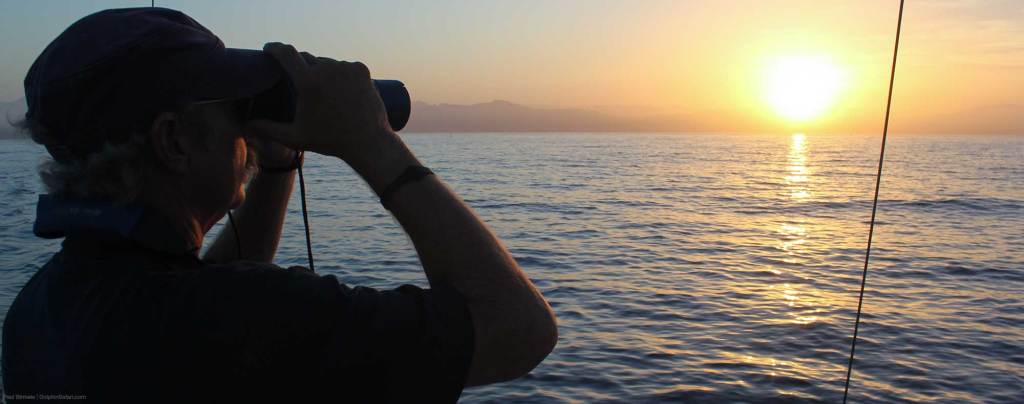
Warm Clothes
No matter where you are, once you leave the warmer and often sunny dock, temperatures are bound to rise once out on the water. The age-old saying “If you go there, take your jacket” also applies to whale watching! In Dana Point, California, Whale Watching Capital Of The World®, temperatures sometimes drop up to 15º as we cruise outside the jetty into the deep blue sea. The sudden drop in temperature can make a whale watching trip much colder than expected if you are unprepared. Add the unexpected element of high seas and moisture in the air; you could find yourself wet and soggy too. Having layers means you are ready and gives yourself the best opportunity to stay warm. Most experienced whale watchers know there is never a bad season for a whale watching trip in California. Always pack along a fleece, outerwear style waterproof jacket that protects you from the wind, a warm hat, gloves, and even waterproof shoes just in case they are needed. If you layer, you can always peel warmer clothes off to cool down, but it is harder to stay warm once you are wet and cold. Be prepared and dress for the adventure!
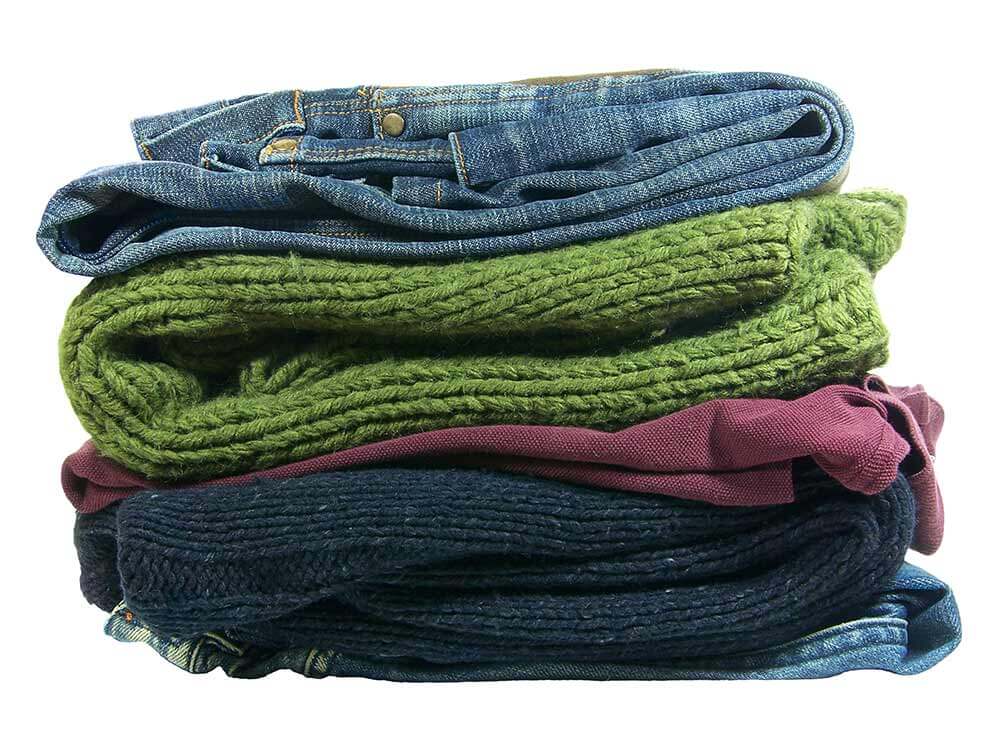
Cell phone
While most experienced whale watchers are traveling with experienced Captains and crews, there are many reasons why having a cell phone is essential on a whale watching trip. It goes without saying you can make calls and send texts from this type of communication device. Cell phones are convenient if you rely on communication with other vessels, captains, and crews. If, for some reason, there was an emergency onboard and the VHF was not working correctly, your cell phone could be considered a life-saving device if you need to call for help. Additionally, your cell phone also works as a stopwatch when timing a whale’s sounding dive, helping to predict when the animal may resurface, ensuring you get that perfect glimpse of the animal as it resurfaces. Lastly, your phone is also your camera! Immediately capturing shareable content from your whale watching trip is essential when on a whale rescue mission. Every experienced whale watcher never forgets this actual item!
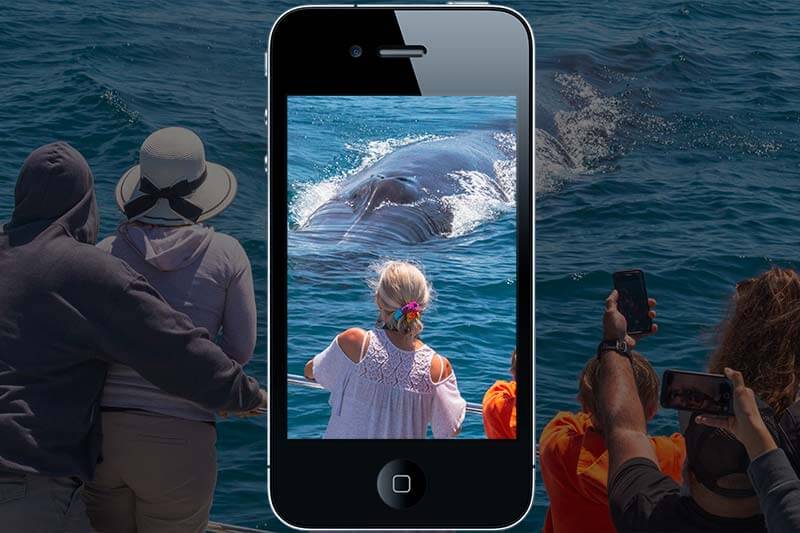
Camera / Video / Drone
Capturing your experience with nature is on every experienced whale watcher’s list of “musts” while on a trip. Investing in a good camera is well worth the money and brings your connection with the animals at sea back home with you for days, months, and even years after your experience. Many experienced whale watchers will also bring a drone to study the animal’s behaviors from an aerial view on a whale watching trip. Seeing the animals from a bird’s eye also helps determine how many animals are in the area at one time. The various vantage points also allow researchers to get more precise documentation of the types of whales traveling together, such as cow-calf pairs and family groups. They can also play a key role in whale rescues.
Many experienced whale watchers are also part of Tier 1 and 2 whale rescue task forces. Drone footage can be sent to land-based rescue teams, helping facilitate the best attack plan for disentangling lines wrapped around the whale. This footage becomes essential for experienced whale watchers trying to save a whale’s life. At Capt. Dave’s Dolphin and Whale Watching Safari, we are first to the scene in many whale rescue missions, so both still and live footage is crucial on this type of whale watching trip.
If you want to bring your drone, be sure to check with the cruise operator before booking. Not all companies all passengers to fly a drone. Here at Captain Dave’s, we do not allow guests to fly a drone on public trips. However, you may bring one on a private boat charter.
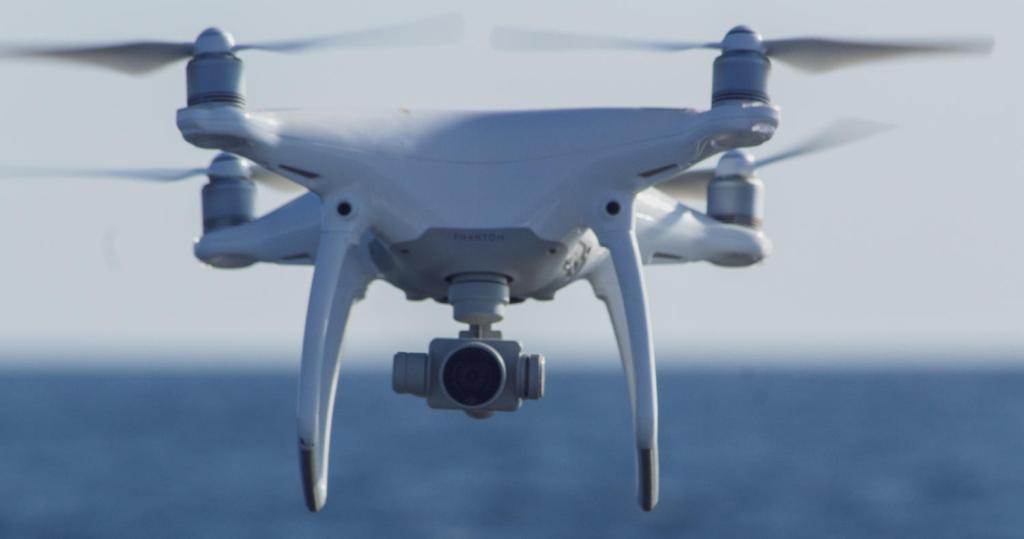
Sunscreen
Summer isn’t the only season for sunburns. In Southern California, the best time to go whale watching is every day right here in Orange County, where the sun shines all year long. Sunscreen is a must for every experienced whale watcher, 365 days a year on every whale watching trip, and essential on a whale watching trip in California. Those warm rays can also shine brightly through the overcast clouds in the sky and, without even realizing it, can burn even the most unsuspecting skin. A quick application before you leave the docks keeps you burn-free. Many sunscreens can cause harmful damage to the vast coral reef systems and marine life dwelling under the surface. Most experienced whale watchers are hypersensitive towards buying ocean-safe sunscreens with mineral UV filters, zinc oxide, and Titanium dioxide instead of deadly chemicals. Without even realizing it, supporting brands that fill their creams and lotions with harsh chemicals can wreak havoc on marine ecosystems below.
Water (In a reusable container)
Remaining hydrated while at sea is just as crucial as your hydration on land. Experienced whale watchers know that anything can happen while out to sea and if unexpected sightings occur, your trips could extend to avoid missing out on a rare sighting. Always having something to drink while onboard ensures you are prepared and will not become dehydrated. Yes, there are other alternatives to your favorite beverage of choice. Still, good ole H2O will not only wet your whistle but also keep you hydrated while out under the rays of the glorious Southern California sun. Experienced whale watchers on a whale watching trip in California are typically earth-conscious people and, usually have a reusable water bottle for the ride. Suppose you are booking a trip with us at Capt. Dave’s, you can do your part by purchasing water in recyclable cardboard boxes instead of plastic! Grab yours at the Dolphin Deck before your trip!

Snacks
Just like staying hydrated is essential, so is managing your hunger. Experienced whale watchers on a whale watching trip have no problem staying out to sea for an unlimited time. This becomes especially true when you are out with your favorite mammals, or young children or are playing a vital role in a whale rescue mission. Of course, no one ever expects to have any boat trouble on a whale watching trip but sometimes, even small issues that are quickly fixed can stir up an appetite, so having a snack will keep those hunger pains away.

Ginger Chews
Does the motion of the ocean get to you? If you answered “yes”, then making sure you take along something to soothe your tummy is essential. If you are a naturalist or a guide leading a trip, it is also nice to offer something to a passenger in need who may be feeling a little “green” to help make their experience a little more comfortable. Ginger chews are all natural and are available at most grocery stores, and pharmacies, and if you are planning on a whale watching trip in California and are riding with Capt. Dave’s Dolphin Safari, you will be able to purchase some from our friendly staff at the dolphin deck.
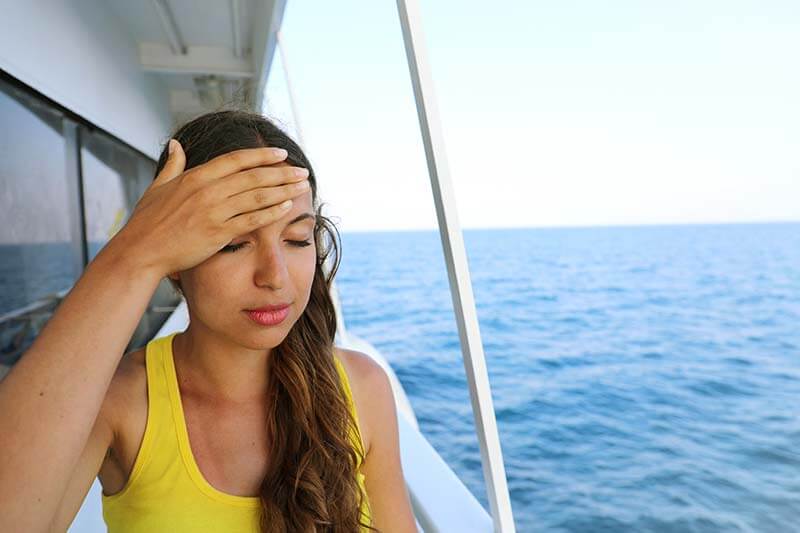
Remember, the very best time of day to go whale watching is whatever day you decide to book your trip. The whales are out every day. It’s just a matter of finding where they are in the deep blue sea with our experienced and professional whale watching experts! A whale watching trip is one of the most incredible opportunities you will ever have in the USA and seeing such a wide variety of whales and dolphins is in Dana Point, CA. There is no better place to bring your family, friends, neighbors, or co-workers to capture a picture of the spectacular animals we have right here in Southern California.
Until Next Time,
Jess Wright
First Mate and Marine Mammal Naturalist
